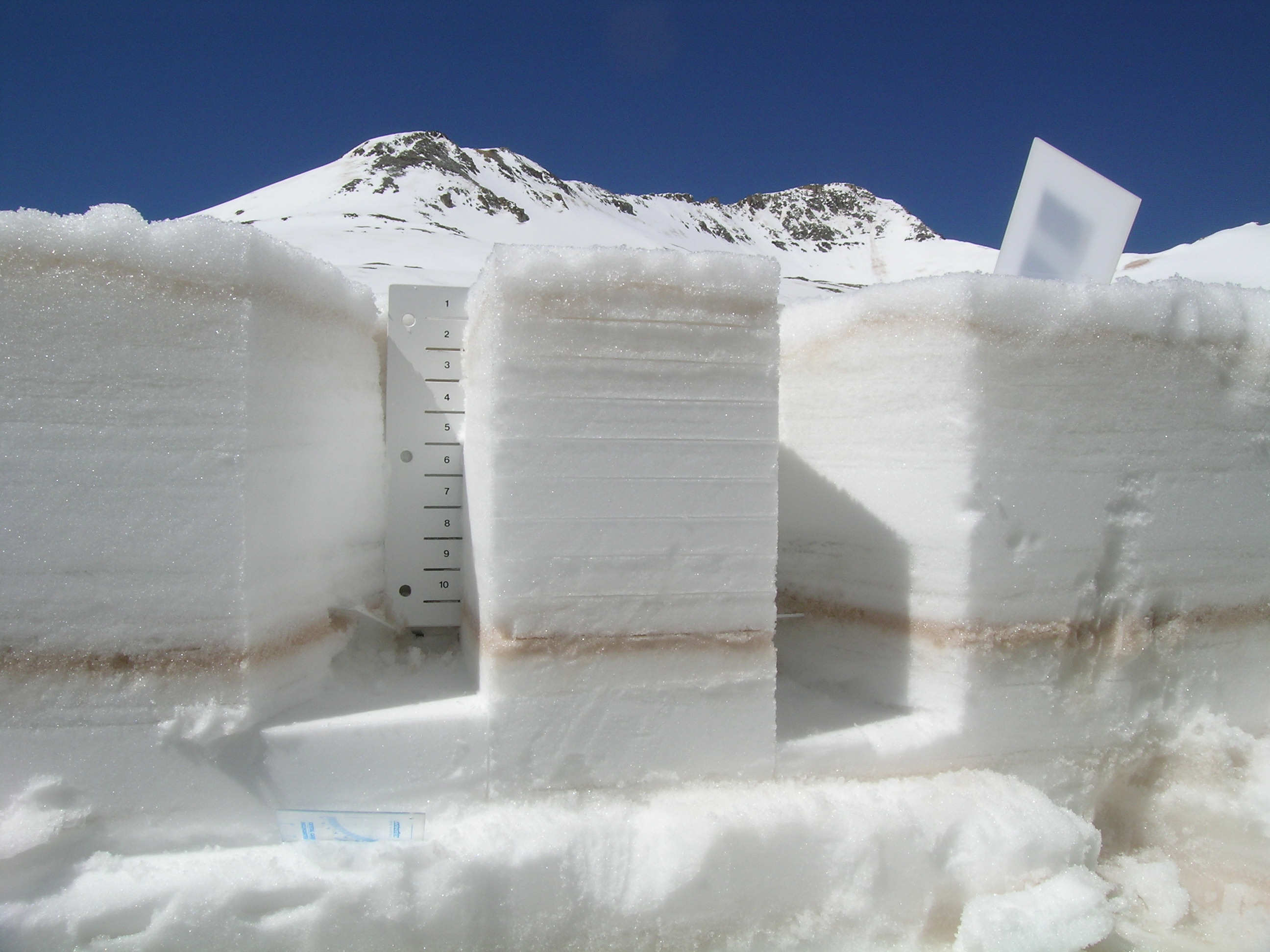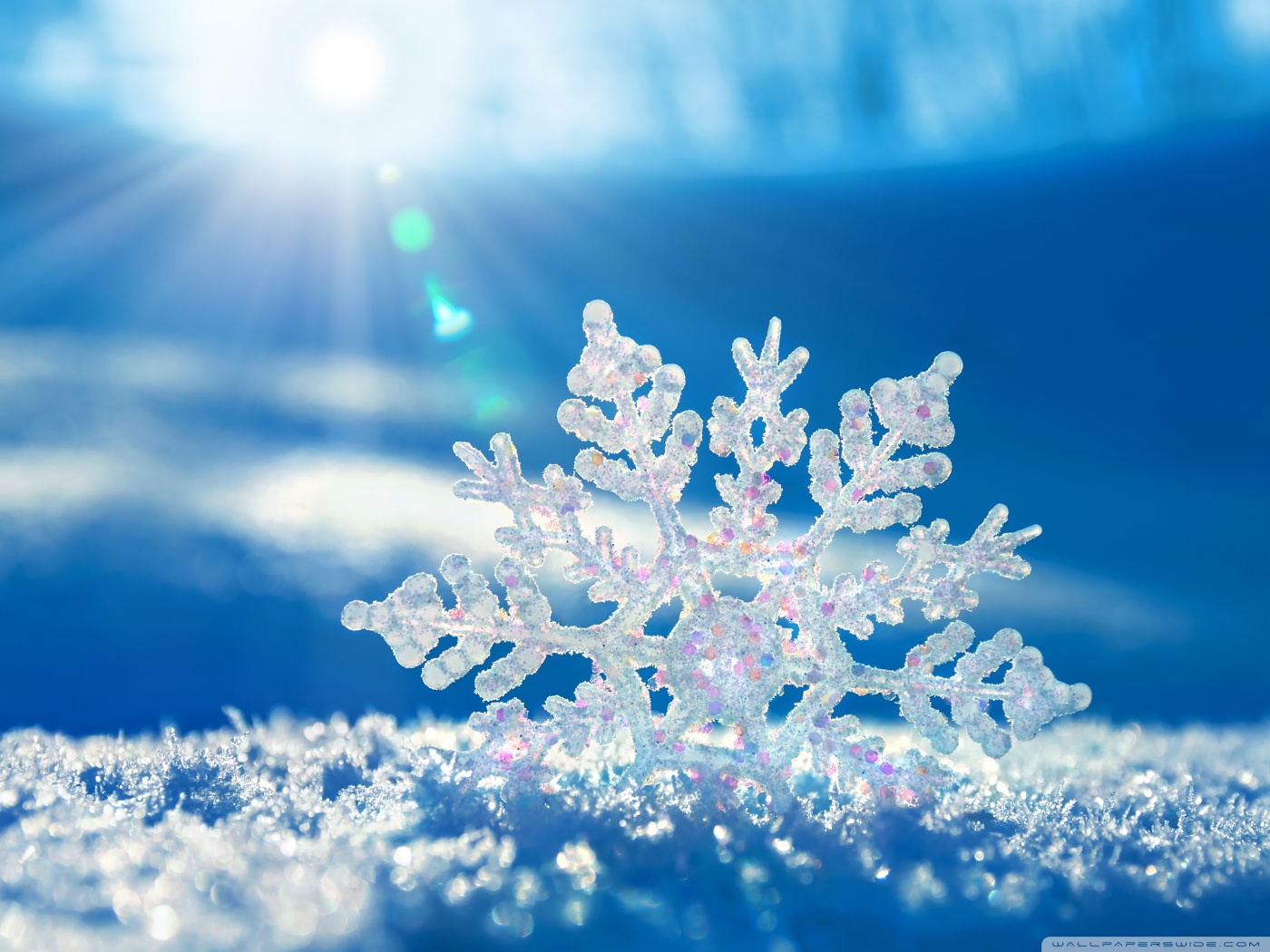Accumulation
Once snow
reaches the ground accumulation may occur. Accumulation
occurs when snow maintains its crystal structure
while bonding to the surface. This means
the surface temperature and structure is
physically capable of making a bond, without the
ice crystal structure transforming into the
liquid phase.
Once accumulation begins ice crystals
will bond with one another to form layers of
snow.
Layers change throughout a season and possess different properties than previous and future layers. Layers can transform through temperature variations. Accumulated snow can repeatedly thaw, freeze, and sublimate. Accumulation interacts with its surrounding environment and continues to change as conditions change. Alterations in the properties of snow at different layers can produce different interactions.
 |
Snow remains on a
slope, such as a mountainside, because of static friction. The other forces
acting on the snow are gravity and a normal force, which is
perpendicular to the surface. The static friction is
determined by the bonds the snow makes with the varying layers
and the surface. The more non-uniform and jagged the
snow particles the more friction the snow will possess. The easier it is for the
snow to slide on itself and the surface, such as with
spheres, the lower the static friction force. When
the gravitational force in the direction down the slope is
equal to or greater than the static friction force of the
snow, a slide, or avalanche, will occur.
The complexity of
friction and length of this topic is too much for the scope of
this examination, however a few key aspects will be discussed. Texture – “the
distribution of shape and size of the grains, pores, and water
menisces present in the medium”10 is a very
important property. Texture has significance in how
jagged or rounded the snow particles are. The bonds created
are important in the mechanical and thermal properties of
snow. The strength of these bonds can determine whether
or not an avalanche will occur. Snow can be classified based
on its texture and porous properties.
The metamorphism of snow is the concept
of snow changing from one form (patterns
and phases) to another.
Snow is considered dry when the pores are filled with
air and not liquid water.
When
impurities within the snow decrease, the state of the snow
will remain solid as the temperature approaches 0˚C from lower
temperatures. Even
if impurities in the snow occur it can still be considered dry
as long as it remains in a solid state. When impurities
occur and liquid water is present, snow can go through wet
metamorphism. This
state involves the interchanging of all three states of water:
solid, liquid and gas. When
wet snow alters it shape the particles will become more
spherical. The
liquid water will fill microscopic gaps i n the dry jagged ice
crystals. This
will reduce the number of contact points for bonds to be made
between the spherical snow and surfaces. Wet snow will
therefore have reduced friction in comparison to dry snow,
given that dry snow is not frozen in
the spherical shape.
Another property that should be considered is the compaction
of snow.
n the dry jagged ice
crystals. This
will reduce the number of contact points for bonds to be made
between the spherical snow and surfaces. Wet snow will
therefore have reduced friction in comparison to dry snow,
given that dry snow is not frozen in
the spherical shape.
Another property that should be considered is the compaction
of snow.
Snow compaction
occurs through snow drift, metamorphism and deformation. Snow drift compacts
snow by increasing density through wind
processes. As
snow is blown, collisions between snow
particles reshape each other making
them smaller and more rounded.
A strong drift can increase density three times within
about a day.11 Metamorphism begins as soon as snow
makes contact with the ground or layers of snow. This occurs through
temperature, shape, and pressure; the particles reshape and
create new bonds to compact themselves. Deformation occurs
more as the levels of snow increases. As the mass of snow
increases the layers become more
compact from gravity. Gravitational
forces break bonds and move particles into new more stable
positions to better support the increasing mass of snow on top
of it.
Snow not only
accumulates on the ground and on slopes but on the canopies of
forests, streets, homes and anything else it can create a bond
between. The energy associated with
snow is one of the most important concepts to civilization not
only in snow climates but globally.
| Continue to
Energy & Snow Home |